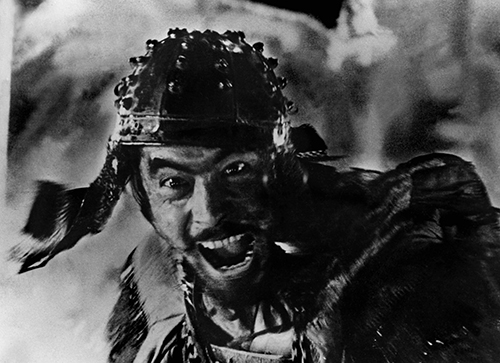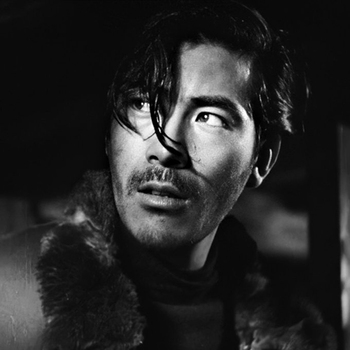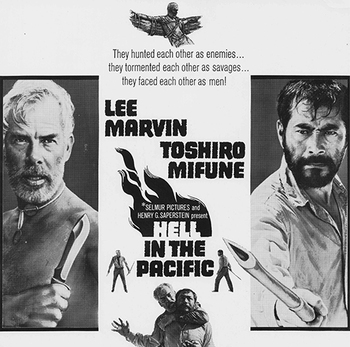Samurai, gangster, vigilante, soldier…
Toshiro Mifune,
from Akira Kurosawa to John Boorman
A great figure of Japanese cinema who became a worldwide star in the 1950s: actor Toshiro Mifune

Japan’s most renowned actor was born in Japanese-occupied China, where his parents had settled in 1920. Two decades later, arriving in Japan at age twenty in the midst of WWII (1940), he enlisted as an Imperial Air Force photographer in charge of taking portraits of kamikaze soldiers. The experience would leave a lasting impression on him. At the war’s end, he applied to the powerful Toho Co. for a position as an assistant cameraman… However, the casting department, on the lookout for male stars, approached him, sealing his destiny forever. Featured in the studio’s “New Faces” contest, Mifune would meet Akira Kurosawa a few months later.

In an exultant sixteen films, including some of the maestro’s finest masterpieces such as Drunken Angel, Rashomon, Yojimbo and Seven Samurai, the collaboration between Akira Kurosawa and Toshiro Mifune became the stuff of legends. The filmmaker relied on the actor's agility and physical presence to bring his heroes to life, while leveraging his comedic potential.
In 1963, bolstered by the worldwide fame he had gained thanks to Rashomon and other motion pictures, Mifune founded his own production company, waded into directorial waters to make his first (and last) film and embarked upon an international career to star in works by Terence Young or John Frankenheimer. In the movie Hell in the Pacific, a masterpiece by John Boorman, Mifune gave an outstanding performance opposite Lee Marvin.

Akira Kurosawa wrote in his memoirs, “The average Japanese actor needs three metres of film to convey an impression. For him, one metre was enough. I had never seen such a sense of timing.” Mifune’s signature character of the vagabond warrior, which reached its apex in Yojimbo, inspired the figure of the lone cowboy, notably incarnated by Clint Eastwood in Sergio Leone's A Fistful of Dollars. The 2024 Lumière Film Festival will celebrate this icon of Japanese cinema.
Toshiro Mifune: from Akira Kurosawa to John Boorman
Drunken Angel by Akira Kurosawa (Yoidore tenshi, 1948, 1h38)
Rashomon by Akira Kurosawa (1950, 1h28)
The Life of Oharu by Kenji Mizoguchi (Saikaku ichidai onna, 1952, 2h17)
Seven Samurai by Akira Kurosawa (Shichinin no samurai, 1954, 3h27)
Samurai I: Musashi Miyamoto by Hiroshi Inagaki (Miyamoto Musashi, 1954, 1h34)
The Rickshaw Man by Hiroshi Inagaki (Muhomatsu no issho, 1958, 1h44)
Yojimbo by Akira Kurosawa (1961, 1h50)
High and Low by Akira Kurosawa (Tengoku to jigoku, 1963, 2h23)
Red Beard by Akira Kurosawa (Akahige, 1965, 3h05)
Hell in the Pacific by John Boorman (1968, 1h42)
Red Sun by Terence Young (Soleil rouge, 1971, 1h52)
Director Mifune
The Legacy of the 500,000 by Toshiro Mifune (Gojuman-nin no isan, 1963, 1h38)
Our thanks to:
Carlotta Films, Park Circus, Potemkine Films, Studiocanal, The Jokers Films, Toho, Wild Side-Wild Bunch




